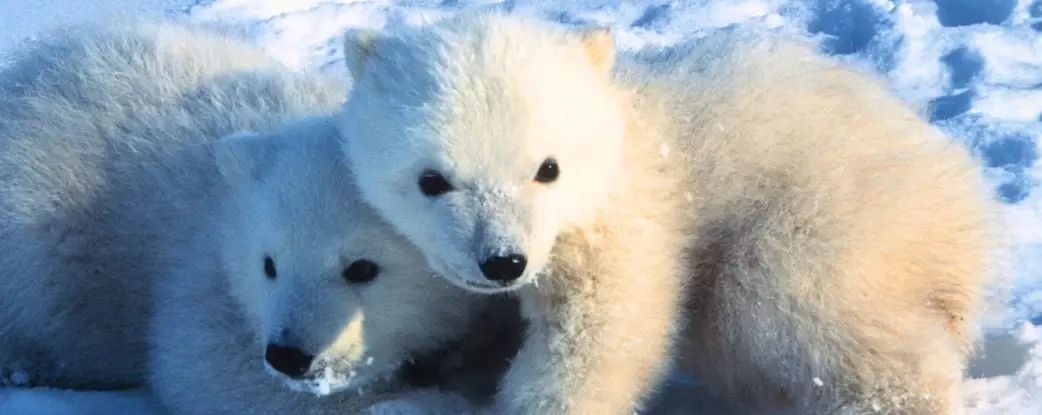In the icy wilderness of Norway, groundbreaking research has unveiled the intimate lives of polar bear (Ursus maritimus) cubs as they enter the world for the very first time. Captured through remote cameras, these moments, more than a decade in the making, offer unprecedented insights into the tender dynamics of polar bear families. The initial phases of a polar bear cub’s life are fraught with challenges, as they are born hairless and incredibly vulnerable to the harsh Arctic environment. The nurturing of these cubs primarily occurs within the confines of their dens, crafted meticulously by their mothers from packed snow, providing the essential warmth and protection necessary for survival.
From the moment of birth, polar bear cubs weigh a mere half-kilogram and rely entirely on their mother’s milk. This initial sustenance is crucial, allowing them to grow exponentially during the winter months. As spring approaches, their diet transitions to include seal blubber, reaching an impressive weight of around 10 kilograms. This transformation underscores the vital role of the mother’s care and the resources available in their frigid habitat. Historically, the survival rate of cubs remains low, with less than half of them reaching adulthood. The fiercely competitive and often brutal conditions mean that the first two years of life are critical and perilous.
Polar bear dens, often hidden beneath several meters of snow, serve as crucial shelters that significantly enhance the survival chances of cubs. The construction of these dens is a testament to the adaptation of polar bears to their environment. Each den typically features two entrances: one for ventilation and another that acts as a portal for young bears to emerge as the weather turns. These snow-formed structures ensure that polar bear families remain concealed from potential predators, safeguarding them while they develop.
However, the design of these dens presents challenges for researchers. The solitary nature of polar bear dens has historically hindered scientific observation. In an effort to learn more about the behaviors and patterns surrounding these critical periods in a bear’s life, an international research team has utilized GPS satellite collars on female polar bears in Svalbard. This advanced tracking technology allowed researchers to pinpoint where mothers are denning, culminating in the installation of time-lapse cameras at various dens from 2016 to 2020, with additional footage collected in 2023.
Data collected from the satellite collars revealed that Svalbard’s polar bear families emerged from their dens earlier than previously documented—around March 9th. This may indicate a shift in behavior, possibly in response to changing environmental conditions. The ramifications of a shorter denning period could be dire; if cubs do not have adequate time to mature, they may struggle to adapt to the frigid environment outside their dens. Tracking data illustrated that once outside, polar bears lingered in and around their den for an average of 12 days before venturing onto the sea ice. However, substantial variability existed between different bear families, suggesting unique responses to environmental stimuli.
Interestingly, the research also highlighted the deep reliance of cubs on their mothers during these formative years. Observations indicated that cubs ventured outside the den alone only about 5 percent of the time, emphasizing the importance of maternal presence. The nurturing behaviors demonstrated by mother bears provide critical lessons in survival and adaptation for their young.
The ongoing challenges presented by climate change and human encroachment into Arctic habitats cannot be overstated. With polar bear mothers already facing significant hardships in birthing and nurturing their young, any additional stressors could exacerbate the plight of this vulnerable species. As researchers and conservationists like lead author Louise Archer and biologist Megan Owen assert, understanding the delicate balance of denning habitats is essential for effective conservation measures. The insights garnered from this study stress the need for protective strategies to safeguard these vital spaces for future generations of polar bears.
As we explore the intricate lives of polar bear cubs through innovative research techniques, it becomes clear that preserving their habitats is paramount. This research not only sheds light on the species’ reproductive challenges but also emphasizes the urgent need to foster an environment where these magnificent creatures can thrive in an increasingly uncertain world. In the face of climate change, ensuring the survival of polar bear populations is not just a scientific endeavor, but a moral imperative.


Leave a Reply